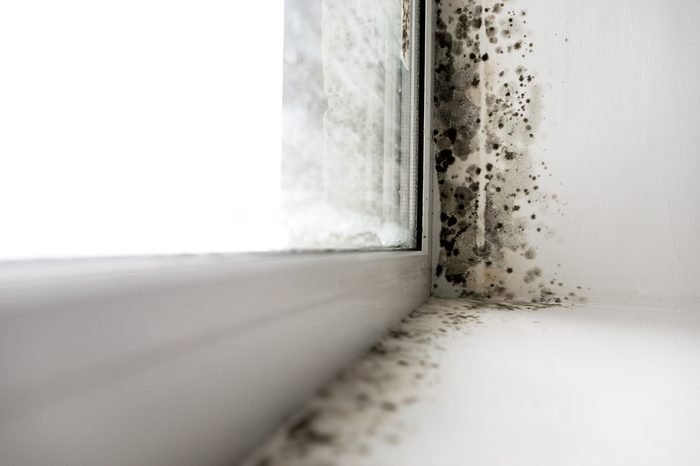Fungi are a unique kingdom, distinct from both plants and animals. Much like their animal counterparts, fungi must find carbon rich materials in the environment to survive but unlike other species they break down this food source externally by secreting enzymes into the environment that turn complex carbohydrates into soluble form.
Through this process of external digestion molds play an essential role in keeping our natural ecosystems healthy and balanced. Fungi are essential to the ecosystem, playing an important role in breaking down dead materials like leaves and trees. Unfortunately, some of these enzymes can also cause damage from ruining food or stored goods to compromising wooden components in buildings.
Common types of fungi include yeasts for baking breads, molds growing on surfaces as well as mushrooms that often pop up after a rainstorm. All molds are considered fungi but not all fungi qualify as mold be sure you know your gray areas.
Mold is a common, yet mysterious organism. From colorful whites to vivid blacks which contrary to popular belief isn’t actually one species, molds are found producing microscopic spores which easily float through the air and can travel far distances with but a gentle breeze.
While it’s true that some fungi may produce harmful mycotoxins in certain environments, there’s still so much we don’t know about these organisms like how many of them exist.
How do professionals eliminate mold from homes?
Some companies can offer you both mold testing and removal services. But, generally, mold testing is performed by a separate company, and then another company performs mold remediation. After that, a post-mold remediation test is also done to check whether the mold is properly remediated.
As mold growth can take hold and spread quickly, it’s important for professionals to be familiar with the steps necessary to eliminate mold from homes.
In general, mold removal requires identifying the source of mold, removing moldy items, and then eliminating all remaining mold through a combination of cleaning and other methods. To identify the source of mold growth, professionals might conduct an inspection for signs of water damage and test for mold spores in the air.
After mold sources have been identified, breaking apart nearby materials such as drywall or insulation can help provide access to all mold-affected areas. Professional cleaners like https://moldtesters561.com/ may then work to remove the mold from furniture, carpets, and other surfaces using specially-designed treatments that are designed to reduce any potential exposure risks during cleaning.
Why Should You Worry About Mold?
Having mold in your home can have serious consequences: it may consume materials, cause structural damage to buildings and leave an unsightly mark on furnishings. Even worse, it has the potential to put your family’s health at risk if not managed properly.
Keeping indoor areas dry is key for preserving a safe environment preventing unwelcome visitors like mold from making themselves comfortable indoors. Fungi pose a variety of risk factors in the indoor environment. From potential health concerns to unsightly visual and olfactory effects, these pesky organisms can wreak havoc on both human safety and building structural integrity.
Taking steps towards preventing fungi from taking hold is essential for creating safe, attractive spaces inside homes or workplaces.
From an aesthetic point of view, a fungal filled environment is anything but pleasant not to mention the danger it poses for structural damage. But even leaving the potential health effects out of consideration, there are strong enough reasons why mold inspection and remediation should be sought when such contamination is discovered.
Uncovering the Dangers of Mold: Health Hazards and Long Term Effects
Breathing in mold is a real health risk for many people. Depending on the individual’s sensitivity, even inhaling or coming into contact with dead mold spores can elicit an allergic reaction. Those most likely to suffer adverse effects from indoor exposure are infants, children and seniors.
As well as individuals who already have respiratory conditions such asthma or allergies and those whose immune systems are compromised due to HIV infection, chemotherapy treatments or organ transplants.
For those who are sensitive to allergens, the presence of mold in certain environments can be potentially hazardous. Common areas like compost piles, freshly cut grass and wooded regions may all carry traces of mold which could prove detrimental if exposed for extended periods.
Though there is still much research needed when it comes to linking human health complications with indoor molds, an understanding that continues to develop each day being mindful of potential hazards should always remain a priority.
A reputed mold removal company in South Florida named moldandenvironmental.com emphasized immediately calling a mold inspector after getting signs of mold presence.
Uncovering the Red Flags of Mold Exposure
Those exposed to mold may experience a variety of uncomfortable symptoms ranging from wheezing and difficulty in breathing, as seen with allergic reactions, all the way through toxic effects. Currently research has revealed that allergies are most commonly linked to exposure of molds; however inhaling fungal spores or other components could lead to further health concerns.
Even the most non-sensitive individuals can suffer from allergies and other medical issues if regularly exposed to mold, spores or fragments. Symptoms range widely from “hay fever” including headache and sneezing to asthma attacks in people with existing conditions such as rhinitis. Other common responses include watery eyes, sore throats, dry coughs and nasal & sinus congestion.

